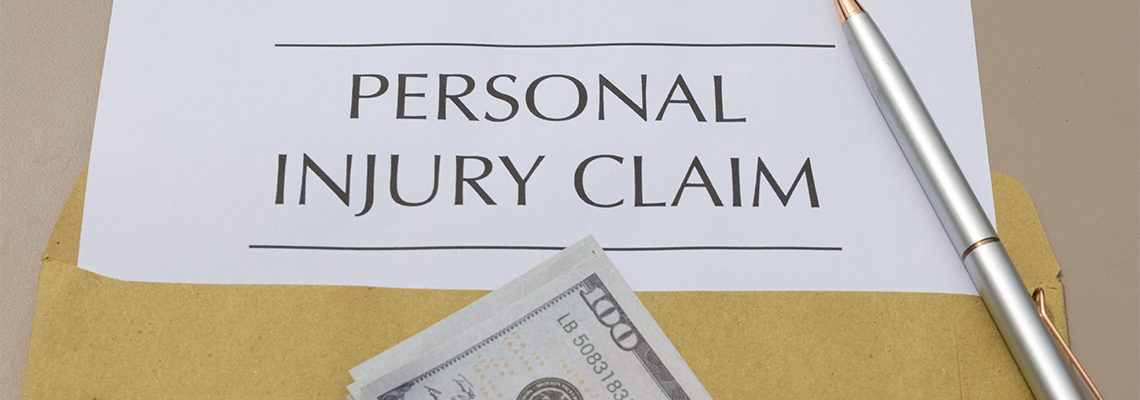Survivors of pedestrian accidents often face severe injuries, mounting medical bills, and loss of income. Understanding your legal options is a fundamental step toward recovery in these difficult moments. Seeking guidance from an attorney who understands the opposition’s playbook can make a significant difference in the outcome of your case.

Understanding Emotional Distress Claims in California Personal Injury Cases
When a serious accident occurs, physical injuries are often the most visible and immediate concern. However, the emotional and psychological impact can be just as debilitating, leaving lasting scars long after the physical wounds have healed. If you're facing emotional distress following an injury, understanding your rights is the first step toward recovery.
Awarding damages for emotional distress claims is often subjective and fiercely contested by insurance carriers. Therefore, working with an attorney who has direct experience in these cases can make a significant difference.
Founded by attorney Andrew Antaramian, Antaramian Law, APC, supports personal injury victims experiencing emotional distress across California, including Los Angeles, Riverside, San Bernardino, Orange, Ventura, and Kern Counties, helping them understand their rights and pursue compensation for their injuries.
What is Emotional Distress?
In the context of a personal injury case, emotional distress refers to the non-physical, psychological suffering a person endures because of an injury or traumatic event. It is a broad term that covers a range of mental and emotional harms. Unlike a broken bone or a laceration, emotional distress is an invisible injury, but its effects on a person's life can be profound and far-reaching. This type of suffering can manifest in many ways, including:
Fear and anxiety
Depression and sadness
Insomnia or nightmares
Post-traumatic stress disorder (PTSD)
Humiliation or embarrassment
Anger and frustration
Loss of enjoyment of life
For example, a car accident victim might develop a debilitating fear of driving, impacting their ability to work or care for their family. Someone who suffered severe burns may experience shame and social withdrawal due to their altered appearance. These are real, compensable harms that deserve recognition within the legal system. Proving the existence and extent of this suffering is a key part of a personal injury claim.
Types of Emotional Distress Claims
In California, there are two primary ways to claim damages for emotional distress. The specific type of claim depends on the circumstances of the case and whether the emotional harm was accompanied by a physical injury.
Negligent Infliction of Emotional Distress (NIED)
This type of claim arises when a person suffers severe emotional distress because of someone else's carelessness or negligence. California law recognizes two main scenarios for NIED claims.
The "bystander" claim: This happens when a person witnesses a close relative get injured or killed due to someone's negligence. To succeed, the bystander must prove they were present at the scene, personally observed the injury-causing event, and are a close relative of the victim (such as a spouse, parent, or child). The shock of witnessing the event must be the cause of their severe emotional distress.
The "direct victim" claim: This applies when the defendant's negligent conduct is directed at the plaintiff, causing them emotional harm. A classic example is a medical misdiagnosis. If a doctor negligently tells a patient they have a terminal illness, the resulting fear and anxiety can form the basis of a direct victim NIED claim, even if the patient has no physical injury.
Intentional Infliction of Emotional Distress (IIED)
An IIED claim is different because it involves purposeful or reckless conduct. This claim is not about negligence; it is about behavior that was intended to cause emotional harm or was done with a conscious disregard of a high probability that it would cause such harm.
To win an IIED case, a plaintiff must demonstrate several things. First, they must show the defendant's conduct was "outrageous"—so extreme that it goes beyond all possible bounds of decency in a civilized society. Second, they must prove the defendant either intended to cause the emotional distress or acted with reckless disregard for the victim's mental well-being. Finally, the plaintiff must have suffered severe emotional distress as a result of the conduct.
Proving Your Emotional Distress Claim
Since emotional distress is not a visible injury, proving it requires strong evidence to support your claim. Insurance companies often challenge these claims, arguing that the plaintiff is exaggerating their suffering. A personal injury attorney can help gather and present the necessary proof to build a convincing case. Some common types of evidence can include the following.
Medical records: Documentation from psychologists, therapists, or psychiatrists is powerful evidence. A formal diagnosis of a condition like PTSD, anxiety, or depression directly links the emotional harm to the incident.
Witness testimony: Friends, family, and coworkers can testify about the changes they have observed in the plaintiff's behavior, mood, and personality since the accident. Their accounts can paint a picture of how the emotional distress has impacted the victim's daily life.
Personal journals: A journal detailing the plaintiff's feelings, anxieties, and struggles can provide a contemporaneous account of their suffering. This personal record can be a compelling piece of evidence.
Your own testimony: The plaintiff’s ability to clearly and honestly describe their emotional pain and its effect on their life is fundamental.
An attorney can organize this evidence into a persuasive argument that demonstrates the reality and severity of the emotional suffering, justifying the compensation sought.
California Laws Governing Emotional Distress Claims
California law allows victims to seek compensation for emotional distress, but some specific rules and precedents govern these claims. The California Civil Code and case law established by the state's courts provide the framework for handling these damages.
Under California Civil Code Section 3333, a person who suffers harm due to the unlawful act or omission of another can recover compensation for all the detriment caused, whether it could have been anticipated or not. This includes emotional and mental suffering. These are considered "non-economic" damages, meaning they compensate for subjective, non-monetary losses.
A key legal precedent is the case of Potter v. Firestone Tire & Rubber Co., where the California Supreme Court outlined that, in NIED cases without physical injury, the distress must be "serious." This means it is not enough to feel annoyed, worried, or sad. The distress must be so substantial that a reasonable person would be unable to cope with it.
California also follows the "eggshell plaintiff" rule. This doctrine states that a defendant must take their victim as they find them. If a victim has a pre-existing condition that makes them more susceptible to emotional harm, the defendant is still responsible for the full extent of the distress caused, even if a person without that condition would have suffered less.
Personal Injury Attorney in Los Angeles, California
If you’ve experienced physical and emotional harm due to someone else’s negligent or intentional actions, reach out to an experienced attorney as soon as possible. Attorney Andrew Antaramian brings a unique perspective to personal injury law. With nearly a decade of experience defending insurance companies, he gained firsthand knowledge of their strategies and claim evaluation methods.
This inside view motivated him to help accident victims and their families, not large corporations. Now, he uses his understanding of how the opposition thinks and acts to build strong cases and secure the compensation his clients rightfully deserve.
Contact Antaramian Law, APC, today to schedule a consultation and discuss how the firm can help you pursue justice.
RECENT POSTS
After an accident, it's common to feel disoriented and unsure of what to do. Dealing with injuries, medical bills, and property damage can be a heavy burden, and it's during this period that most will likely hear from an insurance adjuster. If you've been involved in an accident and are pursuing a personal injury claim, understanding the role of this individual is fundamental to protecting your rights.
When a serious accident occurs, physical injuries are often the most visible and immediate concern. However, the emotional and psychological impact can be just as debilitating, leaving lasting scars long after the physical wounds have healed. If you're facing emotional distress following an injury, understanding your rights is the first step toward recovery.


